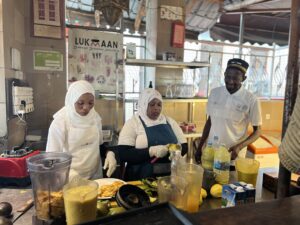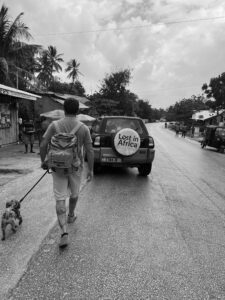How much does a Safari cost?
This is probably the most common question we get, and also the most loaded question. What we like to tell people is these trips are completely custom, so you are in control of the budget. 98% of the Safaris in Tanzania are private, you are not sharing a vehicle with another group. Ideally, this is what you would want for a Safari, as you may not have common interests as the other Safari goers. (You may want to see lions & leopards whereas another couple may have their heart set on birds).

Time of Year can have a huge effect on your cost for safari. When planning a Safari to witness The Great Migration, there is:
- Peak season: June / July-October
- Shoulder: January & February / November & December
- Rainy season: March – May
The cost of accommodations will reflect the time of year you travel; Peak season will be full price whereas the rainy seasons will be discounted however not all of the camps/lodges are open during these months.


National Park fees are inevitable and are a bit costly, but for good reasons. National park fees tend to take up about 30% of your overall safari cost. The National park fees go towards maintaining the national parks, conservation & wildlife protection projects (including anti-poaching programs) & maintaining the grounds for all to enjoy.


How you travel between Safari National Parks can also play a role in your overall cost. If you are on a time constraint and/or want to make the best use of your time to witness all the wildlife you can, you may choose to do a fly-in safari. This would consist of adding an additional bush plane flight to skip the long journey to & from the national parks.


Additional Excursions can also effect the overall cost. You can add on a cultural tour to visit the Maasai tribe for as low as $40 per vehicle, to a hot air balloon ride for $600 per person, to a personal photographer for TBD based on the length of your trip. There are tons of additional excursions you can add on to sweeten your trip which can be arranged added on prior to your arrival.


Accommodations plays one of the biggest roles in the overall cost of your Safari. You will find that accommodations in Tanzania tend to charge PER PERSON PER NIGHT, rather than per room. This is partly because they typically are all full board (meals & drinks) in the overall costs. Accommodations can be as low as $40 to as high as $9,000 per person, to illustrate the wide range of accommodation costs. Camps/lodges within the national parks tend to cost more due to operational costs being much higher. We do use plenty of lodges/camps outside of the national parks to help offset costs, but once you are in the Serengeti, you are far from any lodging outside of the park. (Due to the size of the Serengeti, it is not practical/cost efficient to come & go for multiple days).
We personally inspected all of the camps & lodges within the parks and outside of the parks, so when we are working with our clients, we hand select the lodges/camps to offer them based on what we feel their level of comfort will be. A lot of our guests tend to do a mix of midrange & luxury, as a treat towards the end of their journey. For most, this type of trip is a once in a lifetime, bucket list trip; We want to make sure their expectations are surpassed. Born to Dream Tours offers payment programs, to make your trip of a lifetime perfect & feasible.
There are 3 different categories for Safari Accommodations: Budget, mid range & luxury++


Budget: This is going to be the basic type of accommodations where you can either stay in a budget lodge or tented camp. Campsites will be at one of the National Parks campsites, where you will be helping pitch your tent. Some campsites will have public bathrooms for you to use. Budget safari tends to be a group setting, to help split of fees/cost. For budget lodges, think of a backpackers hostel setting for the accommodations, where you may have a private room with the bare necessities but with a shared bathroom.


Midrange/Semi Luxury: Most of our clients shoot for midrange accommodations, as this will meet their budget & level of comfort. This tends to be the best value for your money when planning a safari. Midrange gives you the widest range of camps/lodges to choose from to meet your level of comfort. Midrange also can range in price, so we have plenty to choose from to meet our clients’ budgets. With midrange, you will have your own private tent/room with your room private bathroom & have restaurants & lounges.
What is the difference between camps and lodges?
- Lodges are full service brick & mortar rooms or cottages with a central restaurant/lounge. Some lodges even offer swimming pools and spa services. Lodges in the national parks I would suggest for anyone who is very nervous about staying in a tent/camp. Lodges tend to have more rooms & a lot more guests. Some offer entertainment in the lounge area & may have a wide range of food to choose from.
- Camps or “glamping” are permanent or semi-permanent camps generally in excellent locations for wildlife viewing. These camps will provide you with all comforts of a lodge, but within the confines of canvas walls. You’ll have your own private tent, bathroom, electricity, wifi. They will have delicious meals & drinks for you and will cater to dietary restrictions. Camps in the parks are the most popular, as they tend to give the comforts of home but also emerge you into nature, where you get to listen to the lions and hyenas sing you to sleep. A majority of these camps only have 7-12 tents so the service is very intimate & usually surpasses anyones expectations.


Luxury/Luxury ++: These camps/lodges are going to be the best the National Parks have to offer. From decadent dining, extravagant accommodations that typically have indoor & outdoor showers in the ensuite bath, private verandas for you to sit out on & enjoy the local wildlife, private bush dinners catered specially to you, to your own personal butler to cater to your every need. Some even have your own private plunge pool to cool off the day and/or a large tub for you to enjoy a hot bubble bath while you look out on the plains of the Serengeti. Luxury accommodations in the National Parks are so decadent, it almost makes it hard to even leave the facilities to go out on game drives!
Given all of this information of what goes into the cost of your trip of a lifetime, we have put together a range for you to have a better understanding of overall costs for an all inclusive trip in 2023 per person cost for a 6 day safari:
These are general average costs which include:
- park fees / concession fees
- lodging (average cost range)
- safari guide
- airport transfer
- all ground transportation
- food / drinks / some alcohol included
- 4×4 private safari vehicle
- game drives
- average excursions added on
Budget : $2100 – $3000
Midrange / Semiluxury: $3000-$6000
Luxury/Luxury++: $5000 ++
When planning a safari, we work with our clients to best fit their needs. We want to share our love for this country and continent with all those who wish to experience it, so we do all we can to help design their dream trip & surpass all of their expectations. We would rather see our clients plan it to their exact wants rather than rush & settle for less than what they dream of. Please do not hesitate to reach out to us to start planning your trip of a lifetime!














